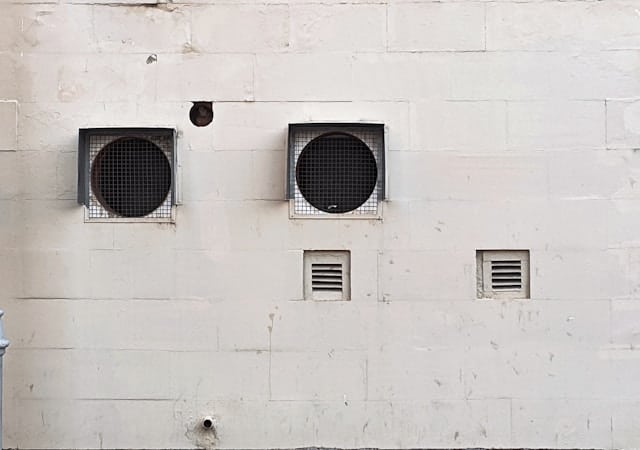In today’s world, maintaining indoor air quality (IAQ) is no longer just about comfort. It’s about health, energy efficiency, and the overall performance of the building. Research from scholars across renowned databases, such as Google Scholar and Crossref, indicates that high-quality indoor air significantly contributes to the occupants’ health and comfort. Furthermore, advanced ventilation systems play a critical role in achieving this, especially in office buildings. Let’s delve deeper into understanding this intricate topic.
The Importance of Indoor Air Quality in Office Buildings
Office spaces are integral to the modern-day professional environment. They serve as the backdrop to countless hours of mental and physical labour, strategic planning, and innovative brainstorming sessions. But have you ever paused to consider the air you breathe while in these buildings? As per leading research databases like Google Scholar and Crossref, IAQ is a crucial determinant of the health and productivity of office workers.
In the same genre : How to Design Family-Friendly Urban Apartments for Modern City Living?
Poor indoor air quality in office buildings has been linked to a myriad of health issues. These range from minor discomforts like dryness and irritation of the eyes, nose, throat, and skin to more severe issues such as headaches, fatigue, shortness of breath, hypersensitivity, allergies, sinus congestion, coughing, sneezing, dizziness, and nausea. In the long run, exposure to polluted indoor air can lead to serious chronic health conditions such as asthma and even lung cancer.
Not only that, but a study conducted by Harvard T.H. Chan School of Public Health also revealed that poor indoor air quality severely affects cognitive function. It demonstrated that high levels of indoor pollutants result in significant drops in decision-making performance, impacting the overall productivity of an office.
This might interest you : How to Develop a Risk Management Framework for International Real Estate Investment?
Advanced Ventilation Systems: The Solution
To combat the issue of poor indoor air quality, advanced ventilation systems have become increasingly important in modern office buildings. These systems effectively control air flow, thereby reducing indoor pollutants and ensuring a healthy and comfortable environment for the occupants. They also promote energy efficiency, thus reducing the building’s carbon footprint.
Advanced ventilation systems balance the need for a healthy indoor environment with energy efficiency by controlling the intake of outdoor air and the removal of indoor polluted air, adjusting humidity and thermal levels. They also use filtration and air cleaning processes to remove dust, smoke, pollen, and other particulates from the air, creating a healthier working environment.
Technologies such as heat recovery ventilation (HRV) and energy recovery ventilation (ERV) systems can further enhance the energy efficiency of buildings while improving indoor air quality. HRV systems exchange the energy contained in outgoing indoor air and use it to treat the incoming outdoor air, while ERV systems also transfer the humidity level in addition to the heat.
Monitoring and Maintaining Indoor Air Quality
With the right ventilation system in place, the next step is to monitor and maintain the indoor air quality. Regular monitoring of air quality levels is important to ensure that the ventilation system is adequately removing pollutants and maintaining the desired temperature and humidity levels.
Advanced smart sensors and Internet of Things (IoT) technology play a crucial role in this process. They continuously monitor parameters such as temperature, humidity, and various air pollutants. They also provide real-time data and insights into the indoor air quality that can be accessed remotely, allowing building administrators to swiftly address any issues.
Complying with UK Regulations and Standards
In the UK, there are established regulations and standards that govern indoor air quality in office buildings. These encompass the design, installation, operation, and maintenance of ventilation systems. Complying with these not only ensures the health and safety of the building’s occupants but also contributes to the building’s energy efficiency and sustainability.
The British Standards Institution (BSI) provides the specific guidelines for achieving adequate ventilation and good indoor air quality. For instance, BS EN 15251:2007 specifies the indoor environmental parameters for designing and assessing buildings’ energy performance concerning indoor air quality, thermal environment, lighting, and acoustics. Adhering to these guidelines, coupled with a conscious effort to maintain and improve indoor air quality, will lead to healthier and more productive office environments.
In conclusion, optimizing indoor air quality in office buildings using advanced ventilation systems is an integral part of creating a healthy, comfortable, and productive workspace, while also contributing to broader sustainability and energy efficiency goals. By understanding the importance of indoor air quality, implementing advanced ventilation technologies, and adhering to the relevant UK regulations and standards, we can create office environments that foster health, wellbeing, and productivity.
Energy Efficiency and Sustainability in Ventilation Systems
In the modern era, where climate change and energy conservation are of paramount importance, office buildings in the UK need to optimise not only the quality of indoor air but also the energy consumption. Advanced ventilation systems offer solutions in this regard, combining energy efficiency with improved indoor air quality.
Mechanical ventilation systems, for instance, can be designed to provide controlled, yet fresh air supply, thereby controlling indoor temperatures and removing air pollutants efficiently. They adjust the inflow and outflow of air, balancing the indoor environment with the outdoor air, and thus, reducing energy consumption.
One advanced solution that has been gaining momentum is natural ventilation. This method utilises wind and thermal buoyancy to circulate fresh air, effectively reducing dependence on air conditioning and heating systems, subsequently lowering energy consumption. By using automatic control systems that respond to indoor air quality and outdoor conditions, natural ventilation can provide a comfortable and healthy indoor environment.
On the other hand, technologies like heat recovery ventilation (HRV) and energy recovery ventilation (ERV) systems do not just improve air quality, but also reduce energy usage. These systems recover heat and moisture from the outgoing indoor air and utilise it to treat the incoming outdoor air, thereby limiting energy waste.
Moreover, integrating these advanced ventilation systems with renewable energy sources like solar power can further enhance energy efficiency and sustainability of office buildings, making them more environmentally friendly and in line with the UK’s carbon reduction goals.
Conclusion: The Integral Role of Ventilation Systems in UK Office Buildings
In the quest for healthier and more productive work environments, indoor air quality has emerged as a critical factor. It has significant implications on the health, comfort, and cognitive performance of office workers. Poor indoor air quality, laden with pollutants and particulates, can lead to a host of health issues, from minor discomforts to severe chronic conditions.
Advanced ventilation systems offer an effective solution to this challenge, controlling air flow, reducing air pollution, and providing comfortable thermal conditions. These systems strike a balance between providing a healthy indoor environment and promoting energy efficiency. Technologies like HRV and ERV systems further enhance this balance by recovering heat and moisture from outgoing air to treat the incoming air.
Furthermore, the monitoring and maintenance of indoor air quality are of utmost importance in ensuring the consistent performance of these ventilation systems. The use of advanced technologies like smart sensors and IoT can aid in this process, providing real-time insights into various parameters of indoor air quality.
Complying with UK regulations and standards, such as BS EN 15251:2007, is essential in achieving optimal indoor air quality and energy performance in office buildings. It not only safeguards the health of the occupants but also contributes to the broader goals of sustainability and energy efficiency.
In conclusion, optimising indoor air quality in UK office buildings is a multifaceted endeavour. It requires an understanding of the importance of indoor air quality, implementation of advanced ventilation technologies, regular monitoring and maintenance, and compliance with relevant regulations. By achieving these, we can create office environments that are healthier, more productive, and more sustainable.






